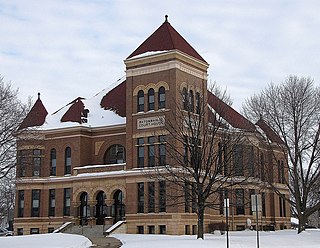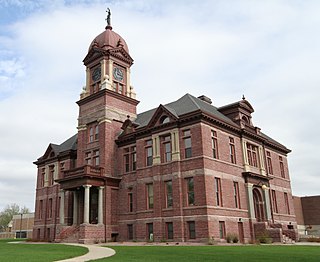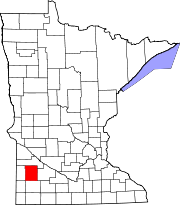
Watonwan County is a county in the U.S. state of Minnesota. As of the 2020 census, the population was 11,253. Its county seat is St. James.

Rock County is a county located in the southwestern corner of the U.S. state of Minnesota. According to the 2020 census, its population was 9,704. The county seat is Luverne. It is located within the Sioux Falls MSA.

Pipestone County is a county in the U.S. state of Minnesota. As of the 2020 census, the population was 9,424. Its county seat is Pipestone.

Lyon County is a county in the U.S. state of Minnesota. As of the 2020 census, the population was 25,269. Its county seat is Marshall.
Cambria Township is a township in Blue Earth County, Minnesota, United States. The population was 271 as of the 2000 census.

Milford Township is a township in Brown County, Minnesota, United States. The population was 793 as of the 2000 census.
Poplar Township is a township in Cass County, Minnesota, United States. The population was 173 as of the 2000 census. Poplar Township was named from the groves of poplar trees within its borders.
Empire is a city in Dakota County, Minnesota. The population was 2,444 at the 2010 census. It is part of the Minneapolis-St. Paul metropolitan area.
Greenvale Township is a township in Dakota County, Minnesota, United States. The population was 684 at the 2000 census.

Nininger Township is a township in Dakota County, Minnesota, United States. The population was 865 at the 2000 census.
Sciota Township is a township in Dakota County, Minnesota, United States. The population was 285 at the 2000 census. The ghost town of Lewiston was located in the township.
Claremont Township is a township in Dodge County, Minnesota, United States. The population was 468 at the 2000 census.

Wacouta Township is a township in Goodhue County, Minnesota, United States. The population was 410 at the 2000 census.

Garvin is a city in Lyon County, Minnesota, United States. The population was 135 at the 2010 census.
Lynd Township is a township in Lyon County, Minnesota, United States. The population was 471 at the 2000 census.
Lyons Township is a township in Lyon County, Minnesota, United States, not to be confused with Lyons Township in Wadena County. The population was 208 at the 2000 census.
Shelburne Township is a township in Lyon County, Minnesota, United States. The population was 180 at the 2000 census.
Faxon Township is a township in Sibley County, Minnesota, United States. The population was 712 at the 2020 census.
Watopa Township is a township in Wabasha County, Minnesota, United States. The population was 265 at the 2000 census.

Wolsey is a town in Beadle County, South Dakota, United States. The population was 459 at the 2020 census.











